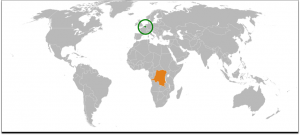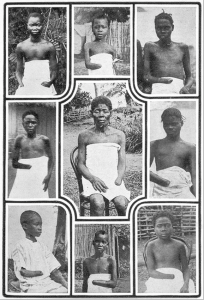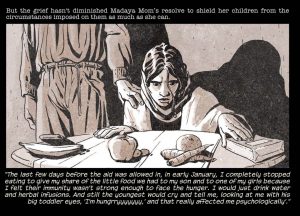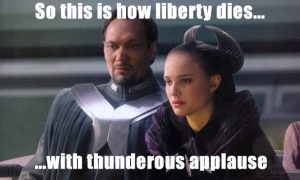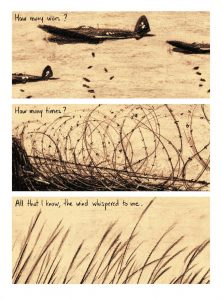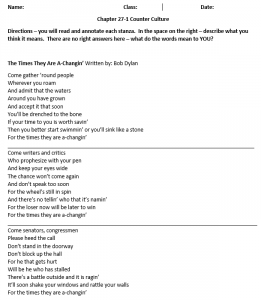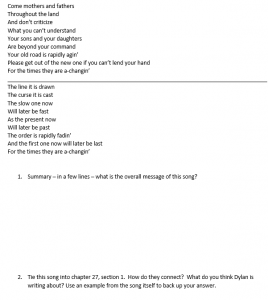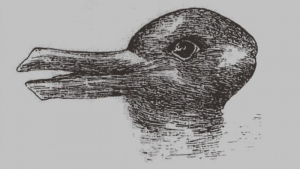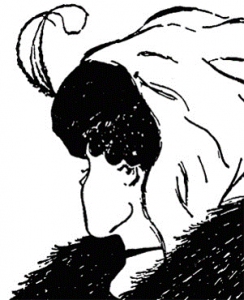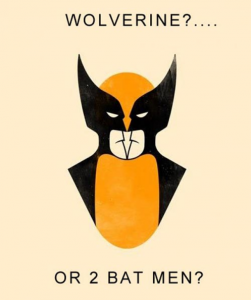I first ran this lesson in 2017, at the bottom of the post, I updated it for 2018.
When I first began as a teacher, the advice I was given was to not let the students see me smile until Christmas and to not divulge any personal information. Now in my fifteenth year of teaching, I realize how true it is to say only a Sith deals in absolutes. (I always wonders who reads my blog – pop culture nerds or educators? lol). I have allowed myself to be more flexible and to see my students as individuals and humans – I also try to have them see me in the same way. Don’t get me wrong, we can also go too far the other way by obliterating the line between teacher and student. There is a lot of my personal life that will never be discussed with my students and, likewise, I would never ask from my students. That being said…
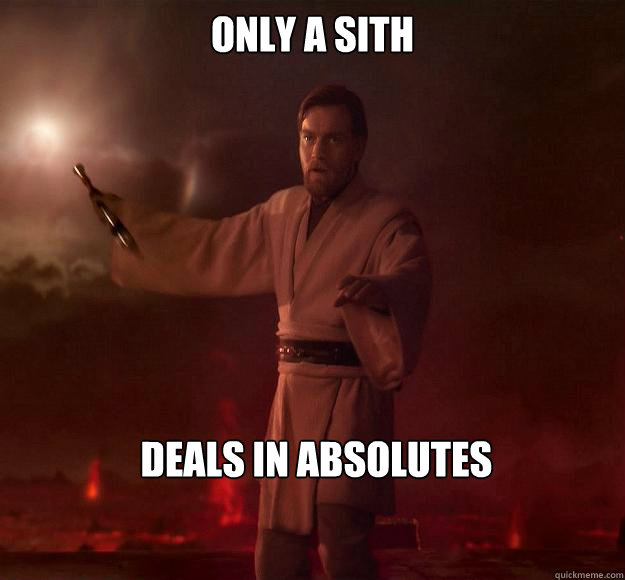
Facebook is great for reminding us of what we did on a certain day throughout the years – it is often wonderful to see memories that have been posted. However, it can also remind us of a painful time and today was one of those days. My son suffers from a rare form of Meningitis – so rare, that we often need to explain it to medical professionals. We are lucky enough to live in the Philadelphia area with so many wonderful hospitals, doctors, nurses, etc (we have been frequent customers at CHOP and St. Christopher’s — have also traveled a bit south to visit the amazing Johns Hopkins), and to have solid health insurance (don’t even get me started on the the healthcare debate in our country). My son continues to suffer from migraines, body pain, extreme fatigue, and can even be hospitalized for days on end. He has undergone so many tests and evaluations, but the best prognosis we have been given is that he will hopefully grow out of it – maybe by age nine. This year, my little man turned nine and it just hit my wife and I – perhaps this is just something he will have to deal with for the rest of his life. Facebook often shows me pictures of him in different hospitals over the years, and this morning was one of those memories in my timeline. He often has to miss out on so much with friends and it can translate into struggles at school as well. As an example, we were at Camden Comic Con yesterday – it was a smaller convention on the campus of Rutgers University. We had taken a break and were sitting in a lobby (we always need to schedule breaks for my son on any trip so that he does not get too fatigued – this is what will lead to hospitalization), when he asked if he could sit in my lap. My first response was to tell him no – he is too big to be sitting in my lap. But then I saw THAT look on his face – where I could tell he was in pain but wouldn’t tell me. I quickly pulled him into my lap as I honestly just didn’t care what any passing adult might think.
My father, (my hero – a Philadelphia Cop) suffered through ALS for about two years and died five years ago this August. I had to watch this proud man suffer the wrath of a disease that continually shut down his body while keeping his mind 100% sharp and intact until the bitter end. He was the type of man who never wanted to rely on anyone or to ever ask for help – but he also had the most amazing sense of humor. It was so hard to watch him have to rely on me as our roles switched and I took care of him. I won’t get into much more detail here, I’ll get to my point soon. My Dad died on the first day back to school and I decided to not take any time off and just dedicated myself to my students and the all important beginning of the year.
Here’s my point, and one I make to my students. We are are human. We all struggle. We all need help and are often afraid to ask for it. There might be a reason why a teacher, or student, was snippy or short with someone. You never know what someone is going through as they come to school each day. I know so many teachers who are suffering through horrendous circumstances, yet they come to school every day with a smile and nothing but encouragement for their students. I also know that students come to school also dealing with serious issues. I have shared some of my experiences with my students and they have with me as well. I see heroic deeds in front of me every day. I try to keep this in mind when a student has a “bad” day – I force myself to take a breath and think about what is happening that has nothing to do with me. I am also a firm believer in restorative practices with my students – I truly believe that 99% of what happens in the day is never personal.

Oddly enough, perhaps, when President Trump ordered 59 missiles to be fired into Syria, all of these thoughts came to mind and I decided to scrap what I was doing on 4/7 and to teach about the events in Syria. (I am a firm believer that teachers, especially social studies teachers, need to make connections to the real world, even if it is outside of the proscribed curriculum). I knew that my high school students would have questions and that many would have heard different things – some true and some not. I also knew that some would fear a coming war, attack, etc and would just increase their anxiety. However, as we are heading into the Jewish Holocaust, I also thought this to be the perfect vehicle to discuss the false concept of “never again” and today’s modern atrocities. I had a comic book in mind to use at some point, and this was the perfect time.

Madaya Mom was put together by ABC News and Marvel Comics – it is available for free and even has a teacher discussion guide – http://abcnews.go.com/International/deepdive/madaya-mom-mother-struggle-survival-syria-civil-war-42362213 . Xana O’Neill, Rym Momtaz, and Dalibor Talajic have put together this amazing resource and have made it easy to access. The videos that accompany the comic are very insightful – take a look for yourself. This was put together after they came across a mother in Syria who was putting out information on social media about the struggles of her and her family.
When I looked through the teacher discussion guide, I came across the idea of asking students to reflect on a time in their lives when they felt powerless. This is the moment when my lesson plan completely came together. My Do Now was exactly that – think of a time in your life when you felt powerless and what steps you took to overcome it. The students then shared with their partners (we sit in collaborative tables of four) and I asked if anyone wanted to volunteer to the larger group. This was one of the only times that I did not walk around the room and interact with students as they worked on the Do Now – I did not want them to feel uncomfortable with my presence. I was astonished with what my students were willing to share and how much of a need for expression I had tapped into. I will not share their responses here to respect their privacy. I reacted to each volunteer, even taking the time to thank students for their bravery and to put my hand on their shoulder. I think I took them a bit by surprise when I shared my own times of feeling powerless – both as a father and a son. After speaking of my son, I related a particular time of powerlessness for me. He was given a spinal tap (one of several through the years) and was too young to be given a sedative. Four adults had to hold him down in the fetal position (I must admit a bit of pride there – strong lad!), and my job was to maintain eye contact with him and to talk with him so that he cold be as relaxed as possible. I then told my students that I love them – that I do call them my kids and that I feel the same way when I see them struggle.
After this discussion, the students were all wondering why I had brought this all up – they know that I am notorious for making everything tie into academia, and this was no different. I told them that, when I began teaching at 25, I thought I understood the Holocaust. I “knew” that all the Germans were evil and that I would have stood up and protected my Jewish students. But then I had kids. I now have a better understanding, an understanding that I will never by able to fully comprehending these times. No longer was life a simply choice – I now had to protect my own children. I would like to think that I would still be the outspoken fighter for justice – I just now understand that, to say the least, life is more complicated.
We then related all of this to a mother in Syria. A mother who had used social media in an attempt to get the world to help. To get the world to care. For me, 18 million dead in the African Holocaust, some 4 million in Holodomor, 6 million Jews, etc – is just impossible to comprehend. I am a visual person, but photos of ghastly images cause the brain to shut down. But if I read about one person or one family – this personalization of history gets through to me in a profound way. Madaya Mom is a way to get this type of story and to make the events more accessible. I want my students to be able to relate to people in these events as, well, people. I want them to see them as normal people caught up in extraordinary events. I believe Madaya Mom, again, is an amazing way to make this happen.
My students were chomping at the bit during this entire introductory phase to talk about the missile launches into Syria – I had heard some asking each other why we weren’t talking about it and were instead talking about our own lives in the Do Now.
I finally explained what we were doing and turned them loose on the internet (we are a one to one school) with some guided questions to find out about the civil war in Syria and why we were involved. The final question was one that pulled it all together – I asked the students to write down whether or not the US should send in more ground troops and to defend their answers. These types of culminating questions are so important – students should not only know how to research, they should also understand the impact of world events on their own lives. They need to think for themselves and be able to defend their ways of thinking. This research was done on their own – I wanted to see what resources they used to find information. We had just spent several lessons researching fake news and source credibility – this was the perfect way to put this teaching to the test.
In 30 minutes, students were able to pair-share their responses and sources – I was impressed with their ability to gather a solid understanding of the history and current events in Syria. Some even made the Jewish Holocaust connection on their own and began to discuss. We then talked as a large group, looked at some maps, and discussed the impact of geo-politics on the region. We discussed Obama and Trump’s choices in the region, the roles of the US and Russia and other players, etc.
For the next class, we will be reading the Madaya Mom comic and watching a video (http://abcnews.go.com/Politics/teachers-guide-discussing-madaya-mom-students/story?id=42419439) Students will be asked to create a document with the one panel in the comic that stood out the most to them. They will then have to explain the meaning of the image and why they chose it – using specific textual (visual) evidence. Students don’t just read comics in my class as a “neat” thing to do – there are real analytical reading and writing skills involved – more so than in traditional text and writing. We will then share them as a class and I will share my choices. The next step is to Skype with a member of the Madaya Mom team – my students will come up with questions ahead of time. My hope is that this becomes a call to action for my students – and not just for Syria.
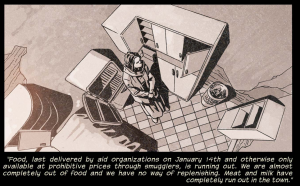
I will update my blog when we do this next step on the week of 4/17 – currently on Spring Break!!!!! I am truly thankful for the ABC News and Marvel team for not only creating this resource, but also for making it accessible to us all. I was able to show the comic and lesson plan to educators at the Camden Comic Con at Rutgers University on 4/8. The lesson was well received and I believe others will now be using it as well.
Big picture – we are all human. We all have scary times of vulnerability – if we could internalize this, I truly believe our shared humanity would be the better for it. I would love to hear your thoughts or suggestions in the comments below.
Update – 4/17
Since we were off of school for a week, students came in and were asked to summarize what has been happening in Syria – and what had just happened over the week-end. I was impressed with the ability of my students to remember what we had talked about a week ago and many were drawn to the news when they heard about the recent bus bombing in Syria. There were a lot of questions – what will the US do, what is Russia doing, I heard there were talks being set up, who was behind the bombing, etc – students were now personally involved in the ongoing events in Syria and it showed.
We then watched this video about the making of Madaya Mom http://abcnews.go.com/Politics/teachers-guide-discussing-madaya-mom-students/story?id=42419439 and students were asked to reflect on the video. Rym Momtaz does a wonderful job of making this difficult topic easy to access and more human and personal. We focused on why this was made into a comic book – how we are a visual society, how it might help readers to connect, etc. Students were impressed that social media and text messaging were able to help get the word out of a struggling mother and her family. Again – the students were now emotionally and personally involved. It was also noted how text messages were being sent in Arabic – students had assumed that texts were just sent in English. We were also able to discuss the breaking up of Yugoslavia and why Dalibor Talajic was chosen to draw the comic. (over and over, the students remarked about the powerful illustrations and how they were able to connect to Madaya Mom through them. In their reflections, students wrote about tearing up and becoming emotional due to Talajic’s work). We will be discussing these events later in the year during the Cold War, so we will be coming back to this comic again. The students also thought it was powerful that ABC News and Marvel comics took the time to get out this message when it seems like many in the world don’t care. When Axel Alonso (editor-in-chief at Marvel) came on the video to discuss making the comic and why Marvel was quick to jump on was a great moment for many students – comics are not just capes and tights – we all know how comics are societal artifacts and can cause real change. This really brought together the core of my teaching and why comics are so important. Many comics tackle tough topics about our world today and are written on a deep and analytical level. As educators, we need to reinforce the power of this medium as another way to engage students in a meaningful and intelligent way. Superheroes truly are all around us and Madaya Mom is certainly of them.
Students were then able to quietly read the comic and answer the following:
Read the comic. When done, go back and choose one panel.
Write –
- Why did you choose this panel? (The power of Talajic’s images is such that students had a tough time choosing only one panel to discuss and analyze).
- How did it make you feel? Use specific textual evidence.
- What connections did you make to history/current events?
- Explain the meaning of the panel – describe it using specific textual evidence
- What questions do you have for the creative team?
This is the power of comics – we are able to focus on skills – close reading, textual evidence, etc while reading a powerfully visual text. I will then collect the responses and send the student questions off to ABS News to prepare for our Skype session next week.
I did share my own thoughts on panels that I had chosen and why – such as

The use of angles and loneliness in this image are just so powerful. In one image, I am able to garner an entire story about this woman and how she must be feeling. The bare cupboards, the cracking walls, the look on her face – all powerfully resonated with me as a father.
Student reflections –
#1 –
#2 –
“This image made me feel some sort of responsibility for how helpless they are depicted. In the comic, most of the people’s mouths are not even drawn. I take this to depict how they feel like they don’t have and say/their words mean nothing. It makes me feel responsible for this because how I feel that I have to spread the awareness so the people in this picture, hopefully, will know that they are heard.”
“It made me truly realize how much I love my family and that I would make any decision to save them from experiencing this kind of pain”
The use of black creates a sense of darkness, isolation, and the scariness of the unknown. Splattered paint makes me imagine the mental/emotional state of the characters… “They had to step in their friend’s blood” – wow.
This comic made me feel grateful for what I have in my life… one time, during a snowstorm, we lost all power – it was very cold at night even under all the blankets… my power was out only for a few days makes me feel horrible for this family.
Panel #32 – throughout the comic, I felt teary-eyed and tried not to cry, but once I reached this panel, I hit a breaking point… it just shows Madaya Mom’s hope deteriorating. Her goal is to keep her kids alive no matter what it takes, but at this moment, she says that “death is more merciful than what they are going through now”
Seeing them sleep together pulls at the heart strings as we connect with them as a family.
This made me feel bad for the daughters because they look traumatized. The one girl on the left is clamping her fists together to show how angry she is. The other, however, looks as if she can’t even hold herself together because she is leaning on her mother who is trying to calm the girls down.
…Her sprawled position on the floor shows how helpless and weak she feels.
#3. We discussed the connection to the Battle of Stalingrad, Holodomor, German Hyperinflation from the 1920s, etc – all through the power of visualizations and how our minds connect to make meaning. The most obvious connection was to the Jewish Holocaust – this even led us to make a parallel to Anne Frank – what if she had a cell phone and social media? Could she have gotten out her story? Would anyone have cared? Would anything have been different?
This made me think of things that happen in the US – school shootings. I instantly thought of this because the panel has to do with girls watching their friends suffer from an event at school.
9/11 and the helplessness felt by the people in the buildings when they knew they were going to die.
I can connect as a lot of my family lives in Venezuela – not as bad as Syria, but – is currently going through a severe economic recession. There are protests that have been going on since 2014. Violence is at an all-time high. People can’t earn enough money because of inflation to buy groceries ro medeicine.
#5. Why isn’t the Syrian government letting these people get aid?
Why is the mom called a superhero when the dad is there as well? Did he have any role?
Why is the comic in black and white/muted colors? Was this a conscious choice?
Is the family still alive and in contact?
Do you think Marvel has a future in other current event journalism type pieces?
In the comic, the characters are not making eye contact with the reader – why?
Has this comic made a difference? Had the US or Syrian government responded?
Has the Syrian government tried to find her and silence her?
What was the most challenging part of this process?
What feedback have you gotten from the comic?
How do YOU feel when reading her texts? Do you feel powerless or empowered? What goes through your mind on a personal level? (to the creative team)
Why don’t more people know/care about what is happening?
How did you initially find Madaya Mom?
How do you know what Madaya Mom is saying is true?
Did she tell you other things that you decided not to publish? If so, why?
Will there be a Madaya Mom #2?
How much artistic license was used in drawing the panels? How did you know what to draw with no pictures?
How does Madaya Mom feel about her story being published?
Will you create comics for other struggling people around the world?
What do you want the reader to take away from the comic?
What is your opinion about the USA stance on taking in refugees?
WHAT CAN WE DO?
_________________________________________________________________________________________________________________________
Next step – Skyping with members of the team who made this resource available for all of us. I will have students ask questions as we discuss what we have learned about in class. Stay tuned for the next update on 4/24!
4/18 – As we are currently learning about WWII and the Jewish Holocaust, the students are also researching other genocides throughout history – Cambodia, Holodomor, Armenia, etc — the students asked to form a team to research the events during the break-up of Yugoslavia because of Talajic’s emotional testimony in the video we watched and what he witnessed! Wow – the students have amazed me their genuine interest and ability to personally connect to the events in Syria through this comic. They see what the power of journalism, and yes, comics can accomplish in the world. Talajic’s artwork had a strong impact on the students as well.
And Now – an update from ABC – http://abcnews.go.com/International/thousands-bused-mass-evacuation-besieged-syrian-towns/story?id=46788854 — my students will be reading about this as well before the Skype session next week. Heartbreaking.
4/24/17 – Update.
Wow – Today was one of the most memorable days I have had in 15 years of education. We had the honor of Skyping with Rym Momtaz and Xana O’Neill today for 30 minutes. The experience was funny, human, sad, empowering, and inspiring all at the same time. After the session ended, my students immediately began to brainstorm ideas on how we can help – we decided to present Madaya Mom to our clubs and to get as many students involved as possible. I am going to take a backseat on this – I want the students to lead the charge. Students no longer felt helpless when learning about depressing news – they knew that they were part of a larger world – the walls of the classroom had been successfully broken down. Xana and Rym shared their personal feelings with my students and how they sometimes questioned themselves if they were doing enough. We told them that they should feel empowered, as now three classes of students felt a personal connection to a far away place and people – something not easily done with all the distractions in today’s world.
I have never Skyped before and was so nervous to make this happen – but it was simply amazing. The buzz from the students continued when the bell rang an I cannot wait to begin planning the next steps with them. I will update this again after I have had more time to digest and to come back down to earth a bit. I will go through my notes from today and share specific responses in the upcoming days.
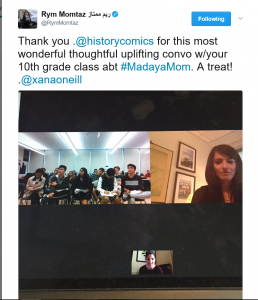




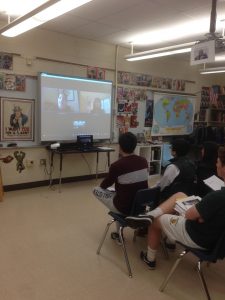
___________________________________________________________________________________________________
2018 UPDATE
I again chose to share with my students my own personal struggles – my children, the death of my father from ALS, my own depression and anxiety. I have a class that has been “tough” to get through to as they are the types of kids who are going through their own personal struggles in life. This lesson was empowering to them as they shared with each other the hurdles through which they struggle. I won’t divulge their stories here, but, wow, these “kids” inspire me through their strength! We had two powerful moments in the class when a student, with whom I had been butting heads, told me of how he needs to take care of his father and how shaken he has been to see what happened to him. We shook hands as I apologized to him, in front of the class, about jumping on his case in class the previous day as I was having an awful day – but then, so was he. I also had a student stand up to say thank you to me for sharing and that he was so sorry for what my family has gone through. I went to shake his hand, but he brushed it off and give me a giant bear hug. Wow – he wanted to comfort me! Another student, who has been withdrawn, became so defensive of my son and told me what a great job I was doing as a father. Wow.
Sadly, the topic of Syria is still in the news this year, and the events are that much more tragic and dire. President Trump has promised to retaliate against the Assad regime this week (4/12/18) following another chemical attack. Putin has responded that he will shoot down US missiles and possibly retaliate against the platforms from which they were launched. We have been following the president’s tweets as historical record and how they will be used by future historians to understand the time period.
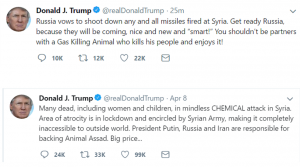
This conflict is of utmost importance to the world, but can be overlooked in all the distractions. My students came to class with background knowledge of the events in Syria due to the Madaya Mom comic we had just read and the research that was conducted.
I also found an AMAZING Syrian-American Hip Hop artist who raps about Syria and events so very important to the world – Omar Offendum. I chose to share one of his songs to the class and handed out the lyrics before watching the video. We discussed some of the lyrics and their meaning before listening to the song. (I placed most of these lines in bold.) The students and I shared that this one song is something we should use at the beginning of the year to confront Western stereotypes about the Middle East and that this is a complicated issue. Through this one song, we were able to discuss culture (food, music, fashion), geography, refugees, geopolitics, and much more. The song, Crying Shame, can be found here https://www.youtube.com/watch?v=LOpZrd8D-nQ . The lyrics –
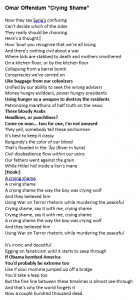

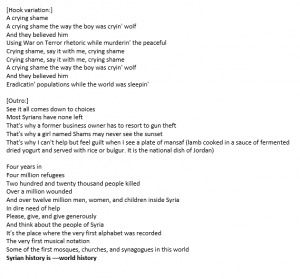
I have also explained the many groups/countries involved in Syria, but I wondered how well it came across to students. As a visual learner myself, I found this image from CNN to be very helpful:
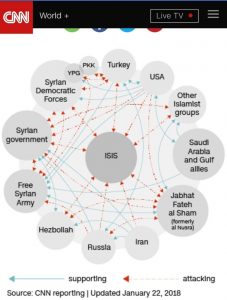
Much of our area had also lost power for multiple days this winter, including my own home. We had to throw out so much spoiled food and my kids were exhausted from the days and nights of inconsistency, having neighbors sleep over (we had a generator large enough to run a space heater), etc. I took pictures of my kids at a restaurant when we went out for breakfast. I shared these images with my students to discuss that, while we were certainly inconvenienced, we were still able to get food and to purchase new food for the fridge when our power was restored. Certainly unlike those in other areas, including Madaya Mom.
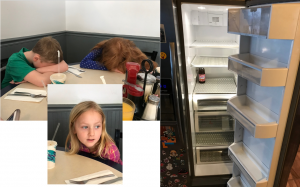
_______________________________________________________________
UPDATE on 4/15/18
The artist for Madaya Mom, Dalibor Talajic, had offered to allow my students to ask him some questions about the comic this year via email. He emailed back with some amazing answers. His timing could not have been better as my students have been emailing me this week-end about the most recent joint-US strikes into Syria – especially as the US government is stating that we are ready to make more moves as well. I have adjusted my lesson planning for Monday to discuss these current events – we need to make time in our classrooms to set aside the formal curriculum and help students understand what is going on in the world.
Dalibor is also a prolific artist of other titles for Marvel (http://marvel.com/comics/creators/11560/dalibor_talajic) and I have much of his work in my classroom.
Emailed questions and responses:
Your artwork really moved my students and you told the story of Madaya Mom so powerfully.
1. Why did you choose the color scheme? We noticed that there were some panels when you added in reds and blues – were these done on purpose?
Actually, Miroslav Mrva was the colourist. And a pretty good one.
My initial idea was to make a black and white comic, but that simply does not fly with the American comicbook audience.
So, Axel Alonso – Editor in chief at Marvel at that time, Miroslav and I came to conclusion to colour the story as discretelly as possible.
To indicate certain emotions, rather than just making blue skies and red sweaters….
2. So many students remarked that you were emotional in the video when discussing the role of a mother in this war. Did this make it, at times, difficult for you to draw certain panels?
Of course it did.
I myself am a parent of two, and having lived through Yugoslavian war I have seen too many dead children, and I simply can not believe that wars are just as present as always. But it is not just war. When you focus yourself on a particular person you get involved, you become responsible, you truly fear for this person and always think you could have done more.
3. We are going to learn more about Yugoslavia in a few weeks. Will you consider making a comic about your experiences in Yugoslavia? This would be so powerful.
It is quite an idea – but really a tricky one.
Post war situation here is quite difficult and really bad.
It was really everybody against everybody, and historical and judicial data is not clear. So if you’d make a story about it, you’d probably be siding with someone for probably the wrong reasons. And you’d most certainly be lying.
And social atmosphere over here is as if the war ended yesterday, and not quarter of a century ago. Things really are not clear.
So, no I haven’t been planning to do something like that. But… you just got me thinking.
4. How can you make a comic that is this emotionally powerful just from text messages? Did Madaya Mom ever send actual pictures? Did you conduct research on how the city/people looked? If so – what was your process? Or was most of this from your imagination?
No, no pictures. Not even from Madaya in general. I had to browse the net for pictures of war and people form around Syria to come up with the general look. And then I did some math – Syria was a nice, civilized country. So people weren’t poor. But anything decent they had, they probably had to exchange for food. So finally they ended up looking as they do in my comic.
Portraits were tricky.
They – especially Madaya Mom herself – had to be graphically universal so to speak. And yet they had to have some feature that would make them convincing and relateble. Very tricky….
5. Are you involved in other projects like this one?
No, not at a moment. There is a project cooking up, inspired by Madaya Mom story, but…. let’s wait a bit with that one. 🙂
6. Would you have any tips for how students could help those in the world like Madaya Mom?
Be truthful!
Just tell the truth whatever you do. Whether it’s journalism, essay, comic, film… Just tell the truth.
And remember that truth does not need to be objective. YOUR truth. What YOU FEEL TO BE THE TRUTH.
And guess what – that particular truth usually is the truth.
7. Our teacher had us pick out one panel that had the most impact on us – and it wasn’t easy to narrow down to just one. What panel had the most impact on you?
The one when she divides food to all family members, but she herself decides to stop eating. It was the hardest one to draw, and it still rings in my head. (below is the referenced panel. Many of my students have also commented on this panel as well.)
Dalibor and I are about the same age and with children. His experiences are so different from my own, but we both connect to the events in Syria in the same way – as parents. When we discuss genocides in the classroom, it is difficult to understand numbers like 6 million, 18 million, 10 million, 250 thousand, etc. It is when we focus on an individual or family that allows for students to understand the events on a personal and emotional level. I will be sharing Dalibor’s answers with my students in class tomorrow and I know that they will have the same emotional impact on them as on me.
In class, we are currently learning about WWII and genocide, but we will soon be moving on to the modern impact of this war and the Cold War. The break-up of Yugoslavia is an intricate and difficult to explain topic, but one that is such an important lesson. This is another example of humanity failing to learn the lesson of “Never Again” and that these events can happen anywhere. As we struggle with increased tribalism in the United States, I feel strongly that we need to reexamine the events in Yugoslavia and what can happen when we refuse to leave our own corners and ideologies. The world learned of “ethnic cleansing” – what an insane word to use. Were we just trying to make ourselves feel better about yet another genocide? I fear, as Dalibor stated, “everybody against everybody.”
You can really feel the emotional impact of these events in Yugoslavia in the Madaya Mom drawings that are so powerful. My students were able to connect on a personal and emotional level as well. As we move into learning about Yugoslavia, Dalibor was kind enough to offer to answer questions from my students about his experiences. I am moved beyond words at the offer and now my students will again have an emotional and personal connection to important events. This is something that they will always remember. I will update this blog again as we continue to go through additional lessons.
4.17.18
Here is a succinct 6 minute video I found on the origins and complexity of the conflict – https://youtu.be/JFpanWNgfQY
UPDATE 6/7/18. Dalibor Talajic, Marvel artist and artist for this comic, answered questions from my students about his experiences in the breakup of Yugoslavia. This made history powerful, emotional, and personal for my students and I am forever grateful:
1. Where did you live in Yugoslavia and how did living there during the war affect you?
I live in Croatia’s Capitol, Zagreb.
Croatia is one of six federal republic that Yugoslavia was constituted of.
So there were Slovenia, Croatia, Bosnia and Herzegovina, Serbia, Monte Negro, Macedonia.
I was going to be 19 when the war broke out. I wanted to join the Croatian forces, but I had not had any military training. So I was assigned to something called National Protection Unit. These were units consisted of civilians, patrolling the cities and villages in order to free the military from that. You should know that in the moment of the war breaking out Croatia did not have it’s army, nor did it have proper police forces.
But living in Capitol, I was mostly spared of all the war horrors. I never shot a weapon, thank god…
2. What was it like living in a country that was at war?
You should understand that we were all born and brought up in a country called Yugoslavia. And it was a shining example of a proper socialist country. Politically Yugoslavia was basically a model for the later formed European Union. And by it’s social values it was model for Scandinavian countries which are nowadays a role model for all the world in that regard.
Words BROTHERHOOD AND UNITY were imprinted in us. These words meant that all the nations living in Yugoslavia were equal, similarities were cherished and not differences. Languages influenced and enriched one another, cultural differences and traditions were considered our richness. And sports wise we were an international force: soccer, basketball, waterpolo, skying…
Nikola Tesla was born in Croatia, Tito- our life long president (true, we weren’t a democracy) – was practiacally the only European leader that orchestrated any serious resistance to German forces in WWII, and for that he had unbelievable respect in the international community.
So, yes I am a Croat, I live in Croatia; but Croatia was a part of something bigger.
So it was not like it was an invasion, agression. I lived in a country that fell apart from inside. THat’s how many of us saw it.
3. What did you think about what was unfolding in your country? Did you ever expect it to go so far?
Even now, 25 years after the war no one agrees what really happened.
Some say it was civil war, and some say that Serbian nationalism went too far in it’s desire to consume all of Yugoslavian territory. But I believe it was a little bit of everything:
Yugoslavia was initially the Kingdom Of Slovenians, Croats and Serbs. This political idea came from a Croatian bishop, Josip Juraj Strossmeyer, who believed that all Slavic nations in the south of the European continent should unite because of their lingual, historical and cultural similaritis. After WWI the country was renamed into Kingdom Of Yugoslavia. By the time of WWII Serbs and Croats started hating each other openly. This really is strange, because we are practically the same. Our languages are more similar the American and British English.
And then the sad thing happened. As WWII broke out Croatia desperatelly wanted to separate itself from Serbia, so the new Goverment joined the Nazi Germany. This was the notorious NDH (Croatian short for Nezavisna Država Hrvatka – Independent Republic of Croatia). So yes, in WWII we were the bad guys.
Luckily for us, at least historically, Tito gathered The Communist party throughout all the Yugoslavian territory and ended up victorious. So he managed to swing us all the was to the allay forces.
But…
Nationalism is a tough beast. For decades we all thought it was gone and bright future is upon us.
But it was only surpressed. As Tito died in 1980, the demons of nationalism started to grow again. 10 years later Yugoslavia finally fell apart. Its components all became independent countries.
And no, nobody thought it was gonna end in bloodshed.
However, too many Serbs lived in Croatia, too many Croats in Serbia… And everybody hated everybody, everybody was afraid of everybody – all of a sudden wives did not trust their husbands any more, neighbours, coworkers…. All it took is one guy to fire first.
And unfortunately there’s always that one guy…
4. Were you displaced from your home?
No. My parents wanted me to go to Austria, to live with their friend. But I wouldn’t go.
5. Did you leave Yugoslavia during the war or after?
I live where I always lived. Nothing has changed. I work for the American publishers, but I still live in my home town.
6. Could the UN have done anything to prevent this genocide?
They tried. They even offered $5000000 to Croatian president and to Serbian president to give up the war and pull Yugoslavia into European Union as a whole, but by that time it was too late. The hate was pulpable.
And right about that time The Soviet Union was falling apart, and that story was far more interesting to The UN.
7. Do you think anything could have been done to prevent this event from happening?
No, I don’t think so.
I thing the war was a deliberate move on all sides. Yugoslavia was fairly rich country. Now all the republics are really poor. And it is interesting to see which people got insanely rich during this time. The loudest of the nationalists of today were the loudest of the communists of the past. And while at war, nobody’s watching those who steel…
8. What was your first memory of the war?
I remember I was reading Orwel’s 1984. And it was fun reading how the media use certain language in order to manipulate the public. ANd then, I heard this same language in our news while talking about Serbia. In that moment I was terrified. I knew: we are doomed.
9. What were your political opinions on what was happening?
I’ve described this already. But if you ask me about the outcome, about aftermath…. I think the bad guys won. On all sides. Because it was never about the other country. We were sold the story of evil Serbs, and in Serbia The Evil Croats story was also a hit. All along it was about devouring every individual country. Our own political elites destroyed Croatia, as have Serbian elites destroyed Serbia. Bosnia and Herzegovina? the poor little patchwork state that consists mostly of Serbs and Croats, and is place right between the two… Now it’s a third world country. THe war and all its horrors, all its disgusting aftermath – it was all a distraction.
10. Do you have any words of wisdom that would help us teach this genocide to our class?
DIVIDE ET CONQUERA! It’s a few thousand years old saying. Nobody learns from it. Learn the history, learn the causality, and whenever some hell breaks lose – look who is making money on it!!! It’s always about that. Do not let yourself swallow BS: Peace? What the hell do you need to keep the peace!?! WE are the one who disrupt it. Democracy? People love each other, they live along just fine – untill some a…hole “teaches” them why they should hate one another. And learn Astronomy!!! Learn some real grandure, be truly awed by true grateness! That way you’ll realize how puny and unworthy all these “greater good” reasons for war are. Remember: nothing – Nothing!!!! – can replace a life.
|

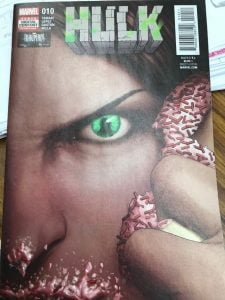


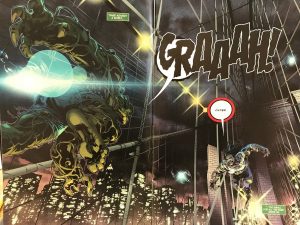
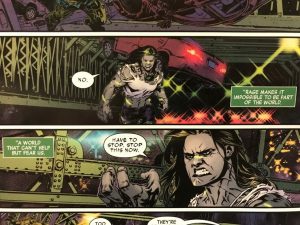
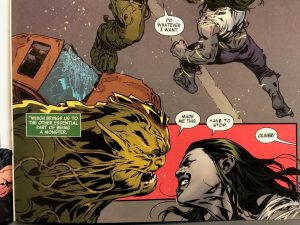
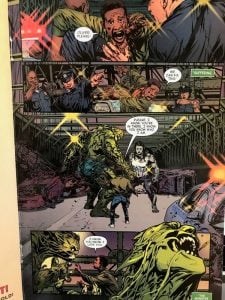

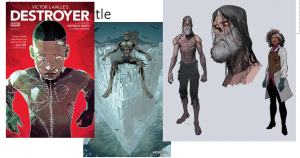
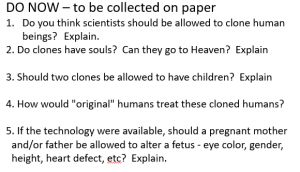
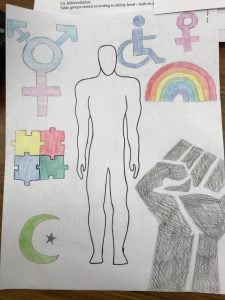

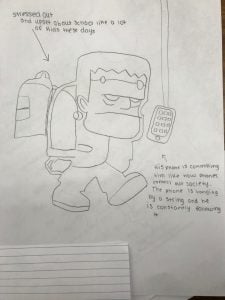
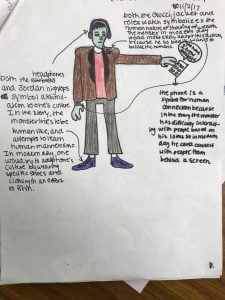

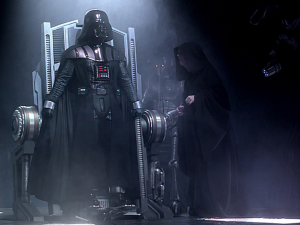
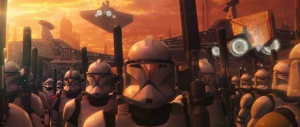
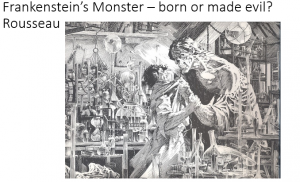

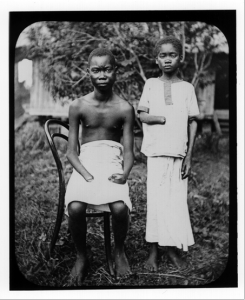 – it is important to allow students to discuss in small groups after they have had a chance to write down some ideas. Ask for textual evidence when students volunteer to the large group discussion.
– it is important to allow students to discuss in small groups after they have had a chance to write down some ideas. Ask for textual evidence when students volunteer to the large group discussion. 